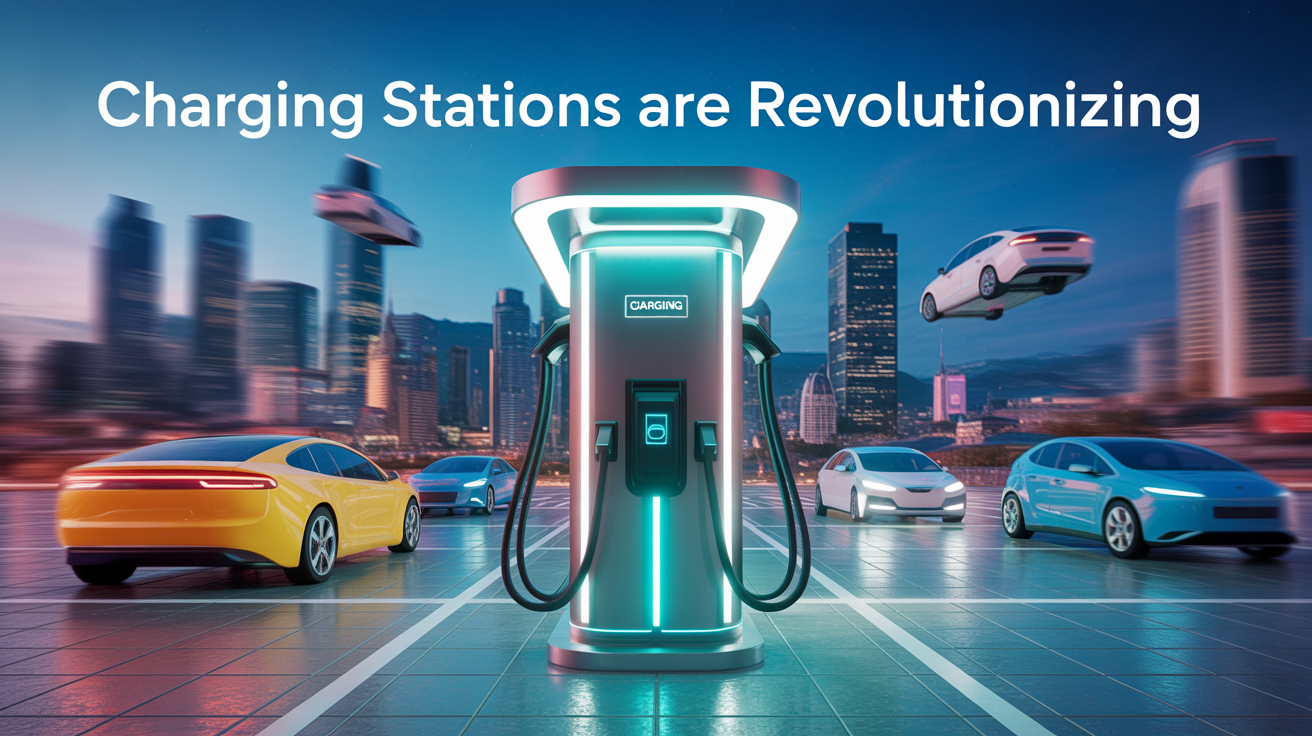Remember the last time your phone died during an important call? Or when your electric car’s battery gauge flashed red miles from home? In our always-on world, power isn’t just convenient—it’s our lifeline. As our devices multiply and electric vehicles hit the mainstream, charging stations have evolved from nice-to-have amenities to essential infrastructure that keeps our digital lives humming.
From Wall Plugs to Smart Charging Hubs

The humble wall outlet served us well for decades, but today’s charging needs demand more. Modern high-capacity charging stations have transformed into sleek, intelligent hubs equipped with cutting-edge technology. Walk through any airport now and you’ll spot advanced stations featuring multiple fast-charging USB ports, wireless Qi charging pads, and even UV sanitization technology that eliminates 99.9% of germs while your device powers up. Many smart charging stations now track usage patterns through secure cloud systems, helping venue managers optimize placement and reduce energy consumption by up to 30%.
A Public Power Lifeline
Imagine rushing to your gate at the airport when your phone battery plummets to 5%—right as you need to pull up your boarding pass. Public phone charging station solutions save the day, turning potential disasters into minor inconveniences. For businesses hosting these stations, the benefits extend beyond customer goodwill. Coffee shops report that customers who charge their devices stay 28% longer and spend nearly twice as much. Museums find that visitors engage more deeply with exhibits when they aren’t anxious about preserving battery life.
Charging at Warp Speed
Today’s charging technology barely resembles its predecessors. New ultra-fast EV chargers can add 100 miles of range in just 10 minutes, transforming the practicality of electric vehicles for long trips. Smart systems now balance power loads across multiple charging points, preventing circuit overloads while maximizing efficiency. At recent music festivals, pop-up charging stations powered by portable batteries have kept thousands of social media posts flowing without missing a beat.
Green Power, Clean Conscience
The days of power-hungry charging infrastructure are waning. Solar canopies now shelter EV charging stations in sunny parking lots, generating the very electricity they dispense. One university campus reduced its carbon footprint by 12 tons annually by switching to energy-efficient charging stations that power down when not in use. These green initiatives don’t just save energy—they build goodwill with the 73% of consumers who consider environmental impact in their purchasing decisions.
The Road Ahead
Tomorrow’s charging stations will vanish into our environment as seamlessly as Wi-Fi. Imagine sidewalk tiles that charge your phone in your pocket as you walk, or parking spaces that power your car without a single plug. Cities are already experimenting with lamppost charging stations that serve double duty, illuminating streets while topping up vehicles parked alongside. As charging becomes invisible, our relationship with technology will transform yet again.
The Future Is Charged
As we look toward the horizon of charging technology, the possibilities seem limitless. Smart city planners are already integrating universal charging infrastructure into everything from park benches to streetlights. Wireless power transmission technology continues to advance, with promising developments in long-range charging that could eventually create charging zones covering entire downtown districts. The convergence of renewable energy sources with charging stations will make tomorrow’s power solutions not just convenient, but completely sustainable.
For businesses and public spaces, investing in comprehensive charging solutions isn’t just about meeting current demands—it’s about future-proofing your environment for the next generation of connected devices. As charging technology becomes more invisible and ubiquitous, those who adapt early will gain significant advantages in customer satisfaction, operational efficiency, and environmental leadership.
The power revolution has just begun. Are you ready to plug into the future?
Summary
Modern charging stations have evolved from simple power outlets to sophisticated smart hubs that are now essential infrastructure in our increasingly connected world. Today’s stations feature fast-charging capabilities, wireless options, and even sanitization technology. Businesses benefit from hosting charging stations through increased customer dwell time and spending, while environmental innovations like solar-powered stations reduce carbon footprints. Looking ahead, charging technology is becoming more seamless and ubiquitous, with emerging solutions like sidewalk charging tiles and long-range wireless power transmission promising to transform how we interact with our devices and vehicles.
FAQs
How much faster are today’s EV chargers compared to earlier models?
Modern ultra-fast EV chargers can add 100 miles of range in just 10 minutes, dramatically improving the practicality of electric vehicles for long-distance travel.
What benefits do businesses see from installing charging stations?
Businesses report multiple benefits, including increased customer dwell time (28% longer stays in coffee shops), nearly doubled customer spending, and improved goodwill, especially when environmentally friendly options are installed.
How are charging stations becoming more environmentally friendly?
Charging stations are increasingly powered by renewable energy sources like solar canopies, incorporate energy-efficient features that power down when not in use, and employ smart systems that optimize power distribution to reduce overall consumption.
What innovations are on the horizon for charging technology?
Future developments include charging infrastructure integrated into everyday objects (benches, sidewalks, lampposts), long-range wireless power transmission capable of covering entire districts, and completely seamless charging solutions that eliminate the need for physical connections.
How can businesses prepare for the future of charging technology?
Businesses should invest in adaptable charging infrastructure that can evolve with technological advances, consider the environmental impact of their charging solutions, and view charging stations as essential amenities rather than optional extras to stay competitive and meet growing customer expectations.


